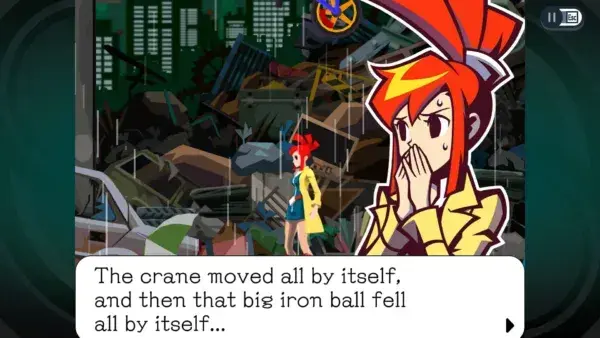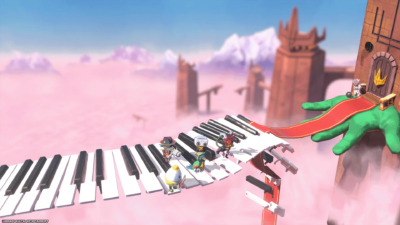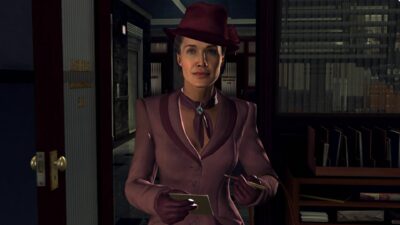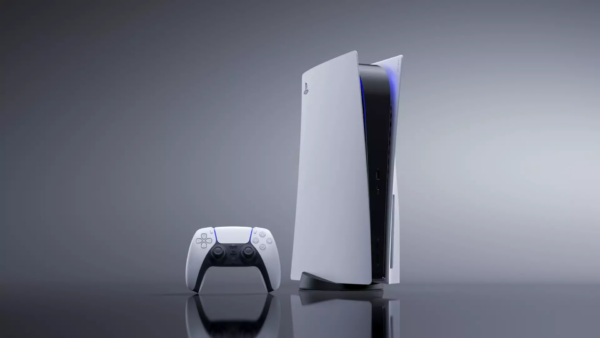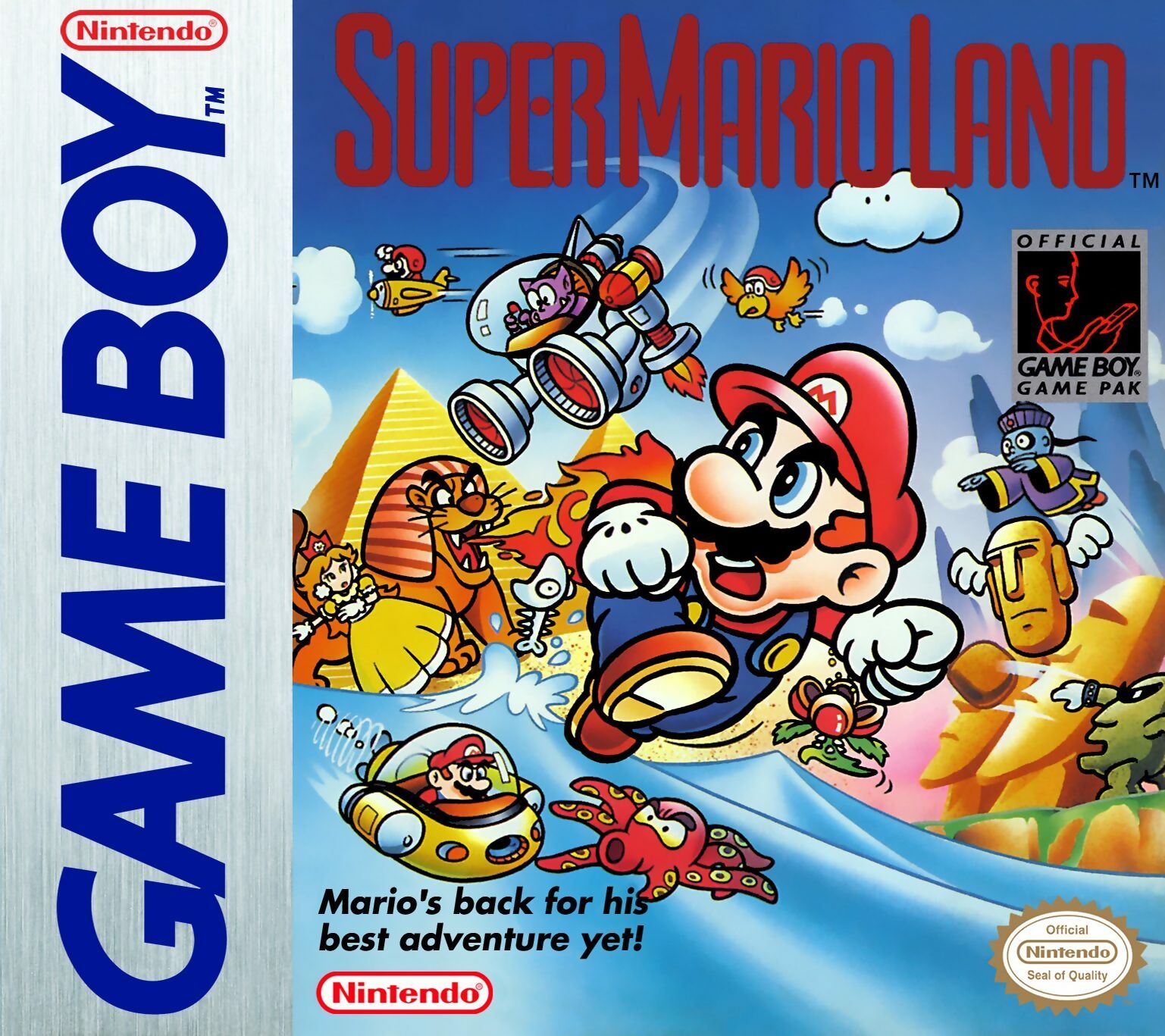
Super Mario Land is still the plucky plumber’s trippiest outing. Ryan takes a look back at Mario’s Game Boy debut.
Imagine a parallel universe where the Game Boy completely tanked. It was 1989, and the gaming public simply wasn’t interested in buying a handheld console with a blurry screen that you could only see in a certain light. The system sat on store shelves for a year or so before quietly fading into history as the Super Nintendo took flight across the globe in the first years of the nineties.
This never happened, of course, but it’s worth remembering that Nintendo was entering a largely untapped market with the Game Boy. Sure, it had captured imaginations with the Game & Watch years earlier, but these were comparatively cheap devices; the Game Boy was a true, cartridge-based console.
For a possible glimpse at Nintendo’s apprehension in the late eighties, take a look at Super Mario Land, one of the system’s launch titles.

Yeah, it looks like a fairly ordinary Mario game at the beginning. Keep playing, though, and Super Mario Land soon reveals its weirder side. Credit: Nintendo.
Short of divorcing it from the lucrative Mario brand entirely, Super Mario Land is conspicuously distant from the console games that preceded it. There’s no King Koopa, no Mushroom Kingdom, and no Princess Peach; in their place, there’s a new villain, the alien invader Tatanga, a new setting, Sarasaland, and a new abductee for Mario to rescue, Princess Daisy. It was as though the team behind Super Mario Land – Nintendo’s R&D1 squad, headed up by Game Boy designer Gunpei Yokoi – were hedging their bets a little. If the Game Boy was a failure and nobody bought Super Mario Land, at least it stood at a sufficient distance from the mainline games to avoid sullying the brand.
Perhaps they could even dismiss the game’s events as simply a bad dream Mario had after eating too much cheese before bedtime.
Because, even by the standards of a franchise that casually floated the idea of a grown man repeatedly jumping on turtles and mushrooms, Super Mario Land is incredibly surreal. Mario’s journey through Sarasaland takes him inside Egyptian pyramids populated by fire-breathing sphinxes, past Moai heads from Easter Island, and through what appears to be a bamboo forest.
Most worlds end with Mario thinking he’s rescued the princess, only to see her mutate into a giant insect and hop off the screen – leaving Mario visibly shaken. It’s “the princess is in the other castle” routine from Super Mario Bros., given a Kafkaesque twist. “Oh! Daisy!”, indeed.

We’d actually quite like it if more Mario games had scrolling shooter stages. Credit: Nintendo.
Then there’s Super Mario Land’s curious obsession with UFOs. You can see the first one hovering in the air at the start of World 2-1, and looking at the ladder-like tractor beam that emanates from the underside of the craft, stretching down to where Mario’s standing, the implication seems to be that our hero was actually brought here by the flying saucer.
Note that this isn’t just any old flying saucer, either: it’s very evidently modelled after the ones ‘photographed’ by George Adamski in the early 1950s. Later that same decade, Adamski claimed to have taken a ride inside one of these spaceships from Venus. Is Nintendo suggesting that Mario was abducted by aliens in the late 1980s?
Super Mario Land’s oddness doesn’t begin and end with its background details, either. Enemies include the snapping fish skeletons, galloping Moai heads, floating Moai heads with wings, and hopping zombies.
Then there are the unexpected shoot-‘em-up sequences, where Mario slices through the ocean depths in a submarine, blasting away at aquatic life, or takes to the air in a biplane to take on the final boss, Tatanga, and his flying war machine. Interestingly, Shigeru Miyamoto originally planned to have aerial shooting stages in Super Mario Bros., but the idea was dropped because he felt it distracted from all the running and jumping.

Fifties-style saucers in the incredibly strange Super Mario Land. Credit: Nintendo.
Put all this together, and you’re left with a curious assortment of locations, enemies, and gameplay elements that were never explored again before or after. Haphazard though it all feels, there’s also something wonderful about Super Mario Land’s unfettered imagination. Faced with a new, untested system, some tightly limited hardware, and seemingly without the oversight of Miyamoto (who was probably busy on Super Mario World at the time), the Super Mario Land team approached the project with a cheerfully relaxed, anything-goes attitude.
Like the Game Boy itself, Super Mario Land was an unqualified success, ensuring that its sense of mild anarchy would continue in two further handheld sequels, both produced by Yokoi and Nintendo R&D1.
The first, Super Mario Land 2: 6 Golden Coins, introduced Wario – a villain consciously designed as Mario’s dark mirror image, and one who survives a series staple to this day.
Indeed, while Nintendo quietly dropped a lot of the things introduced in Super Mario Land, traces of its oddness remain in the wider series to this day – often in the shape of UFO sightings.
In Super Mario Galaxy, for example, a UFO that looks remarkably like Adamski’s swoops down and takes away Princess Peach’s castle. In 2011’s Super Mario 3D Land, there’s a blink-and-you’ll-miss-it UFO cameo if you look through a particular set of binoculars.
All subtle yet affectionate nods, perhaps, to Mario’s trippiest outing to date.


